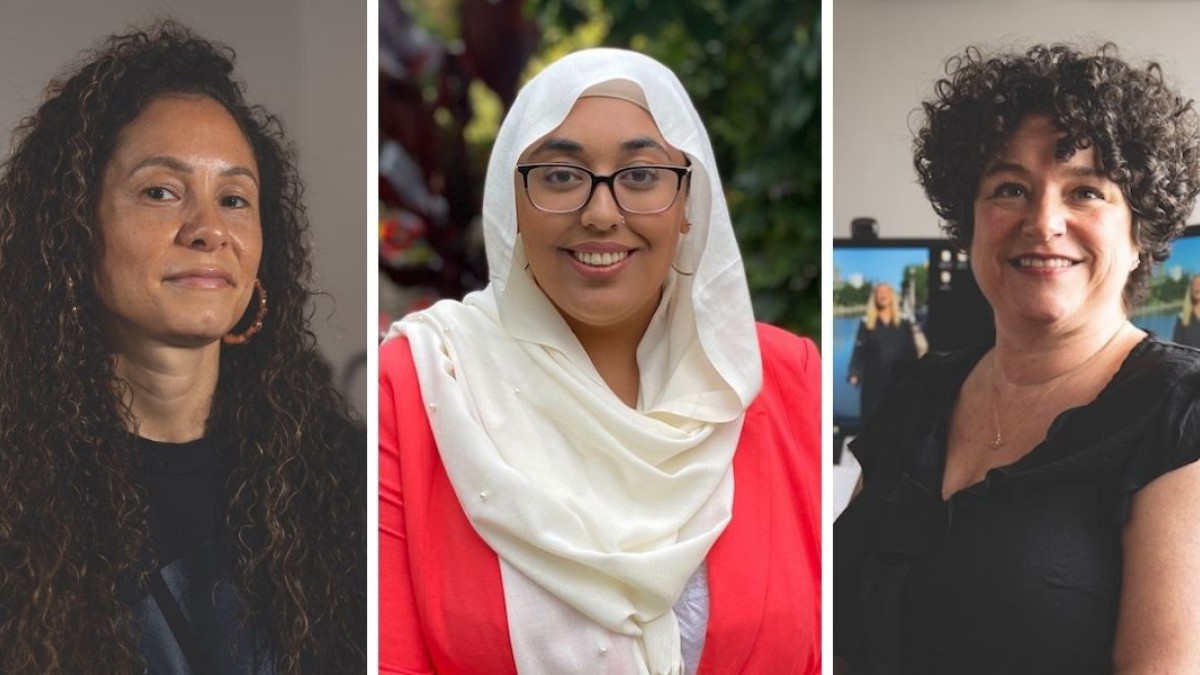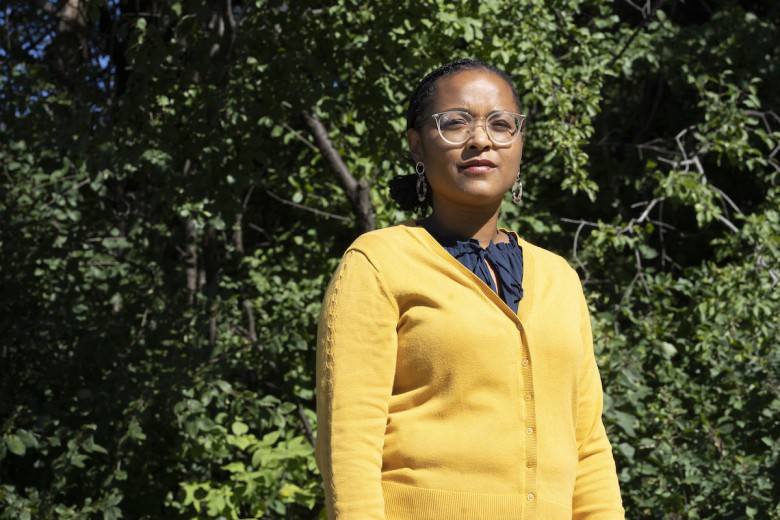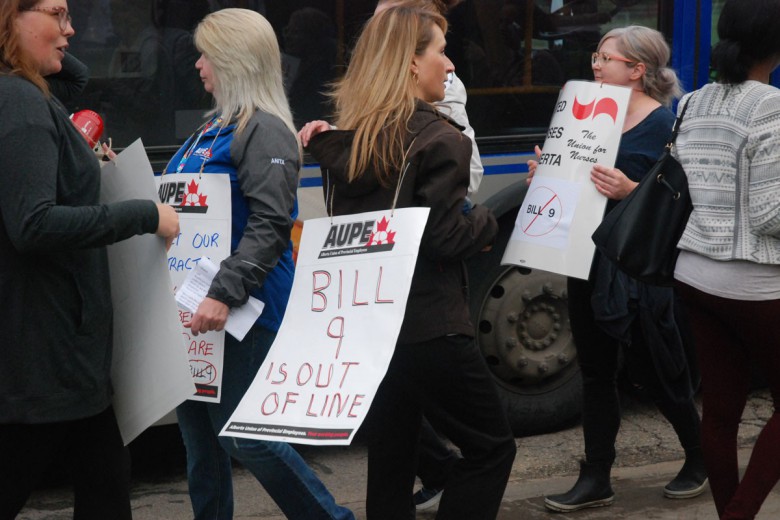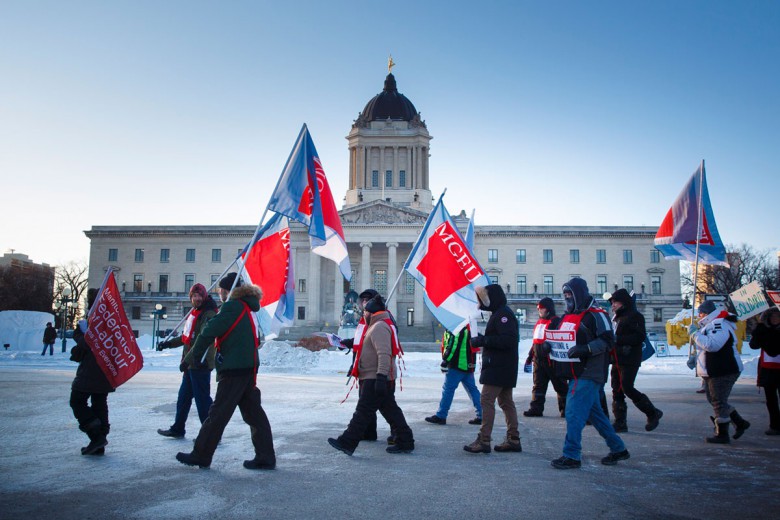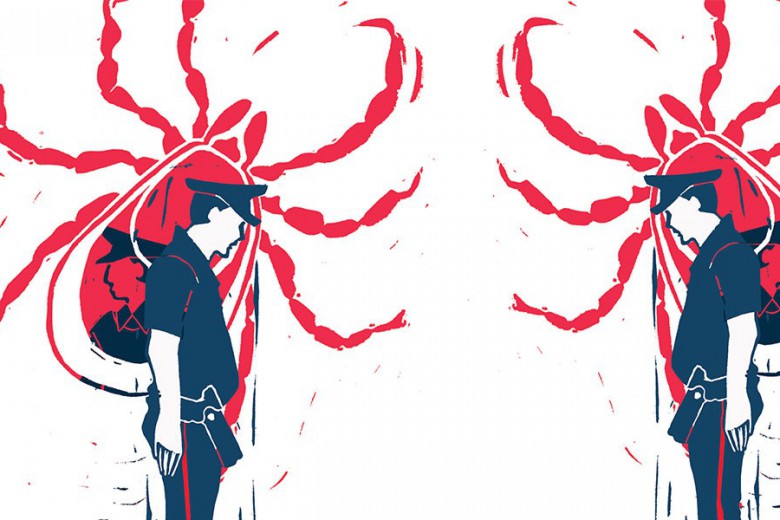“The labour movement is like any structure built upon white supremacy and patriarchy,” says Rachel Besharah, a labour educator at the Public Service Alliance of Canada (PSAC) and a member of Unifor. “If the focus continues to just be at the individual level, we’re never going to dig up the deep, deep roots of the [harmful] systems and structures that unions were built upon.”
Ayesha Khan, a former member of and union organizer with the British Columbia General Employees’ Union (BCGEU), agrees. She points out that with the advent of white feminism, where it was once an old white boys’ club, the labour movement in B.C. “has become an old white people’s club.” Khan believes that “we need to organize really fucking hard in order to change this. Because [labour] is democratic, it feels like it’s a structure that can be permeated if workers of colour and other equity-seeking folks are involved,” she says.
Last year, I wrote “Do not ever get used to it,” a piece that appeared in Briarpatch’s November/December 2021 Labour issue. In that piece, five trade unionists shared their experiences of patriarchal white supremacy in unions – from dismissive and insulting remarks; to executive members installing a surveillance camera in the union office to monitor a Black woman union leader; to a lack of women, Indigenous people, and people of colour in leadership. They also shared strategies for fighting against sexism, racism, and oppression in labour movements.
By fighting for the dignity of the whole worker, organizers argue that unions will not only create more justice, but also build a much more powerful labour movement and form stronger coalitions with other struggles.
Underlying these strategies is the notion that union members are not simply names on a dues-checkoff list but whole workers: multifaceted humans who struggle for justice and dignity as wage labourers but also as Indigenous and racialized people, women, trans and non-binary people, migrants, disabled people, caregivers, and so much more. By fighting for the dignity of the whole worker, organizers argue that unions will not only create more justice, but also build a much more powerful labour movement and form stronger coalitions with other struggles.
Here, Besharah, Khan, and Verda Cook, a union negotiator, share additional strategies for building feminist, anti-racist unions rooted in fighting for the whole worker. As my first article acknowledged, this fight is not new. But it’s also not over yet.
What does a union leader look like?
“I think of myself as fairly militant, but I’m diplomatic, and that’s not always seen as what a strong leader should be,” says 50-year-old Besharah. As president of the PSAC staff’s Unifor Local 2025 from 2011 to 2019, Besharah used collaborative approaches and focused on building consensus instead of relying solely on the typical combative methods of filing complaints and grievances.
To prepare for bargaining, for example, Besharah organized discussion groups “to bring members together to collaborate on proposals for bargaining demands, so that they would understand each other’s perspectives, and so that down the road, there would be more collective willingness to stand firm” if the employer sought to reject the demands. Some members criticized her collaborative style of leadership, as well as her choice not to depend on bureaucratic tools like Robert’s Rules to run meetings. Because of these experiences, Besharah believes that many trade unionists need to broaden their conceptions of what strong leadership looks like.
Cook, age 44, a negotiator and classification officer at PSAC who’s also a member of Unifor, agrees. In the labour movement, she says, “as a Black woman, sometimes it’s hard to see yourself [reflected]. You have to put on a certain role, kind of a working role which isn’t necessarily your full personality.” Cook points out that women and racialized people bring a different type of leadership and credits her own leadership skills to her community and family.
Verda Cook. Photo by Chelsea Flook.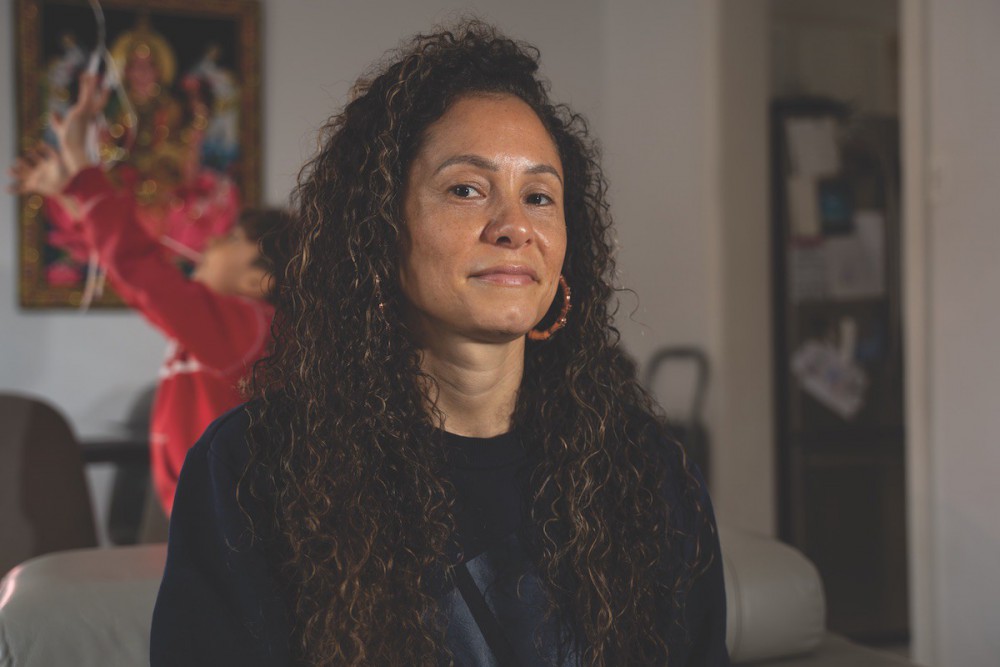
As Besharah did when she was a local president, Cook considers her ability to foster teamwork to be among her greatest strengths as a negotiator. Instead of arriving with a preconceived notion of what a bargaining team needs to focus on, for example, she builds confidence and respect within the team by listening to the members, determining what key issues are important to them, and then showing support for those issues in bargaining.
Cook also notes that she can relate to the perspectives of racialized union members because of the lived experience she shares with them. “It’s a balance between being professional and being real,” she says, describing her leadership style as a negotiator. She gives the example of how, in a recent meeting, she connected with a bargaining team member from Jamaica who used her own words to succinctly summarize the definition of workplace sexual harassment. “It’s very affirming to other people when you’re speaking their language,” Cook observes. “It allows them to be authentic to themselves as well.”
Unions need “more diversity of what we consider powerful leadership qualities,” Cook continues. In labour, there is a sort of patriarchal and elitist mystique associated with prominent roles like negotiator or local president, which are often regarded as technically difficult and purely confrontational. Cook asserts, however, that “people skills is what makes a good negotiator, not crunching numbers. You bring who you are to the table.”
Implementing concrete anti-oppressive measures
Along the same lines as Cook and Besharah’s belief that a broader range of people should be able to bring their strengths to union leadership, Khan proposes the adoption of proportional representation in union elections to ensure that the leadership reflects the makeup of the membership. Achieving proportional representation across the BCGEU leadership is also a recommendation of the union’s 2019 “Workers of Colour Roundtable Report.”
Khan, age 28, is a visibly Muslim woman of colour who has been a shop steward, an at-large executive member, and a young worker representative at the B.C. Federation of Labour. In 2019, while she was a BCGEU member employed on contract as a constituency assistant at the B.C. Legislative Assembly, Khan filed a grievance after the permanent position she applied for at the Legislative Assembly was awarded to another candidate who was not visibly Muslim. In that case, the white union representative assigned by BCGEU to represent her dismissed Khan’s stated experience of Islamophobia as being “just based off of feelings.”
Ayesha Khan. Photo by Yacubu Abubakari.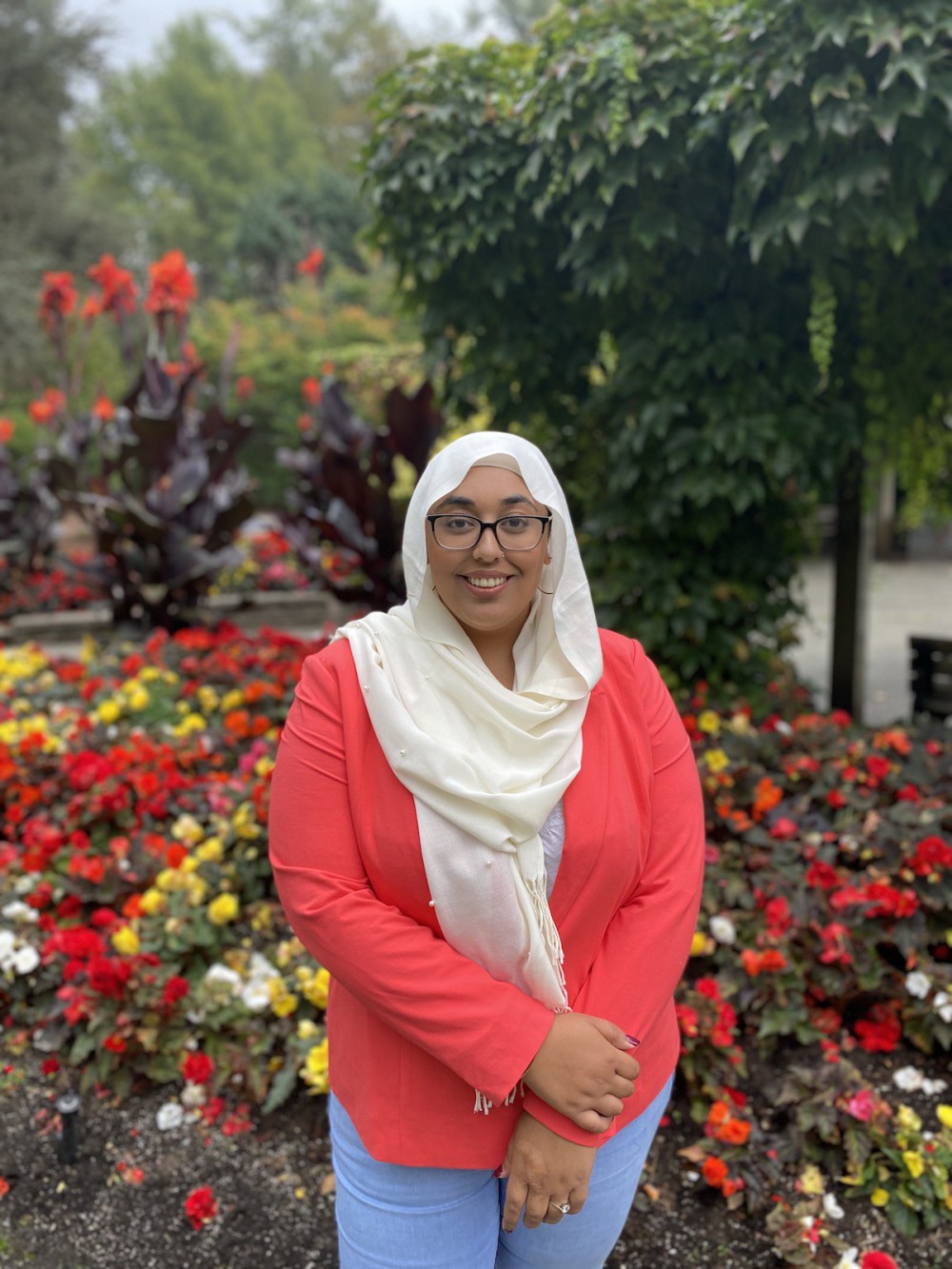
Khan went on to work on contract as a staff organizer at the BCGEU for nearly two years and wanted to continue in the role, but the BCGEU rejected her candidacy for a permanent organizer position. She notes that at the BCGEU, hiring for permanent positions is typically based on seniority, and once a staff member has been a contractor for a certain amount of time, “it’s often assumed you will be a successful candidate for the permanent position.” Khan suspects that, as in her experience in 2019, “underlying racial misogyny” is ultimately the reason she was unable to obtain permanent employment at the BCGEU. She filed a grievance after being excluded from the permanent position and has not heard back from the BCGEU.
Reflecting on these experiences, Khan argues that unions would better meet their members’ needs by hiring people from a variety of life experiences and linguistic backgrounds and who have an understanding of racism and religious oppression. “In my experience,” she says, “racialized members specifically hesitate in raising issues of racism in the workplace because white reps don’t understand their experiences.” As a result, she adds, grievances related to racism often do not go forward “because the reps don’t know what to do with them.”
“I think of myself as fairly militant, but I’m diplomatic, and that’s not always seen as what a strong leader should be,” says Besharah.
Khan suggests designating some elected and staff positions specifically for people of colour, Indigenous people, and others whose lived experience is not currently reflected in union leadership or staff. She also underscores the importance of permanent staff positions for racialized people, since racialized people, especially women, are much more likely to experience precarious work, just as she did at the BCGEU.
Khan also lists a number of tangible gains union members can fight for in bargaining that would help transform unions into places where those who experience systemic oppression are included, respected, and valued. These include recall rights for temporary workers, which would allow them to be called back to work after a layoff just as permanent staff would be; days off for cultural observance, such as Indigenous ceremony; and rollover language ensuring that employees automatically become permanent after working for a certain number of months in a temporary position.
Redesign hierarchical structures imported from capitalism and colonialism
While Cook underlines the importance of racialized women like herself taking on leadership roles within existing union structures, she does not believe that simply inserting women into the existing colonial, patriarchal structures will eliminate sexism and racism in labour. “I don’t think that’s going to change the system,” she says, just as “hiring Black cops doesn’t change police brutality or racism in the police force.”
Cook proposes that trade unionists go further to fight oppression by transforming their hierarchical decision-making structures. “Our structures of president, vice-president – these just continue to emulate the patriarchy,” she observes, and they often attract people who want “to lead for the power in and of itself.” Cook believes that starting at the local level, trade unionists should adopt “more fluid leadership models and more non-hierarchical” structures. In addition to distributing power more democratically, another advantage of these models, Cook says, is that they support the work–life balance that trade unionists need to be able to fulfill other roles such as that of caregiver. If power is shared more broadly, she notes, people can step back from the work more easily.
As a result, she adds, grievances related to racism often do not go forward “because the reps don’t know what to do with them.”
Writing for Briarpatch in March 2020, Jon Milton points to Montreal’s Syndicat des travailleuses et travailleurs en intervention communautaire (STTIC), a union that represents workers at a number of the city’s community organizations, as an example of a local working to democratize its decision-making structures in the same spirit as Cook proposes. While they are legally members of the STTIC, the current local leadership are also members of the Industrial Workers of the World (IWW) and are experimenting with a variety of the IWW’s more radical approaches. These include holding open meetings six times a year as opposed to once a year, as well as ensuring that all rank-and-file members have access to union trainings. The local also opened its bargaining mobilization committee to all members, a change that leaders say better represented members and brought more diversity to the local’s pressure tactics. STTIC leaders explain that the local’s more participatory, combative, and democratic approach has not only strengthened members’ ability to defend their rights in the workplace, but also bolstered their ability to win better working conditions during negotiations.
Cook suggests that such transformations in decision-making structures require trade unionists to develop the skills to truly work by consensus. She points out that coming to a consensus can involve some members of a decision-making group simply accepting that they can live with a decision, as opposed to being convinced to arrive at complete, unreserved agreement. Having worked by consensus in the steward network at a Canadian Union of Public Employees (CUPE) child care local, Besharah adds that since this approach focuses on maintaining and building relationships within the local, it can also be useful in preventing major conflicts from arising.
Valuing reproductive labour
“I’ve always valued motherhood,” says Cook, who is a mother of three. Speaking to me on the phone from the sidelines of her child’s soccer game, she explains that while she is a committed trade unionist, for caregivers such as herself, being a labour activist is “not our only role.” She sees Dolores Huerta, the renowned leader of the United Farm Workers, as a model for trade unionists who are also parents. Talking about Huerta’s work to co-found the National Farm Workers Association with Cesar Chavez, Cook notes, “She raised a family of seven and was out there [...] fighting for her people.”
Cook says her own union workplace reproduces the patriarchal, capitalist attitude that devalues both paid and unpaid reproductive labour, such as caring for children and elders, cooking, and cleaning. This essential labour is generally only seen as an impediment to staff’s ability to travel frequently and work on weekends. “It wasn’t that long ago that there were only male negotiators,” Cook says. Even now, she continues, “you’ll find that [women negotiators are] mostly either women who don’t have children or whose children have grown up.” While this is the current way the work is done, “that’s not the way it has to be designed,” Cook says.
One way that design is being challenged, Cook notes, is that in recent years, men have taken more responsibility for their dependents, with some reorganizing their work schedules or refusing to travel on weeks when they have custody of their children, for example.
“It wasn’t that long ago that there were only male negotiators,” Cook says. Even now, she continues, “you’ll find that [women negotiators are] mostly either women who don’t have children or whose children have grown up.”
The next step would be for unions to systematically prioritize reproductive labour. Cook suggests ensuring that bargaining takes place during regular work hours, which would allow for primary caregivers to participate. In current union culture, bargaining sessions often go way into the night and operate under a sometimes false sense of urgency, especially in large bargaining units. Cook adds that while “it’s still important to engage with members face to face,” holding some bargaining sessions virtually even after the COVID-19 pandemic no longer requires it would allow for more women members and staff negotiators to participate.
Finally, Cook underlines the importance of her workplace’s child care policy, which reimburses staff for child care costs incurred when they travel, for example. The policy, fought for by women trade unionists, now also covers reimbursement for costs related to the care of elders and dependent adults. “I would not be able to be a negotiator or do any travel related to work – be a union rep, for example,” she says, “without the child care policy.”
Involve children and youth directly
Child care policies are one concrete way that unions can value reproductive labour and trade unionists’ roles beyond the workplace. This can be taken even further by recognizing children and youth as active members of the labour movement. Although they may not pay dues or clock in to the workplace, children and youth directly benefit when their caregivers have living wages, parental and sick leave, healthy and safe workplaces, and child care benefits – all things that workers have won and continue to defend by organizing in unions. Children and youth are also future members of the paid workforce; by providing spaces and resources for them, labour can help young people understand the importance and history of unions and the rights of workers and all oppressed people. This strengthens the labour movement, no matter what side of the bargaining table the children end up on once they join the paid workforce.
Besharah provides an example of what directly involving children and youth in labour could look like. As a member and later president of a CUPE local at the Centretown Parents’ Cooperative Daycare in Ottawa from 1998 to 2008, Besharah attended numerous union conventions. Child care was provided, but Besharah wanted her five-year-old daughter, Olivia, “to have a better understanding of work [I] was doing to make a better world for her.”
Rachel Besharah. Photo by Chelsea Flook.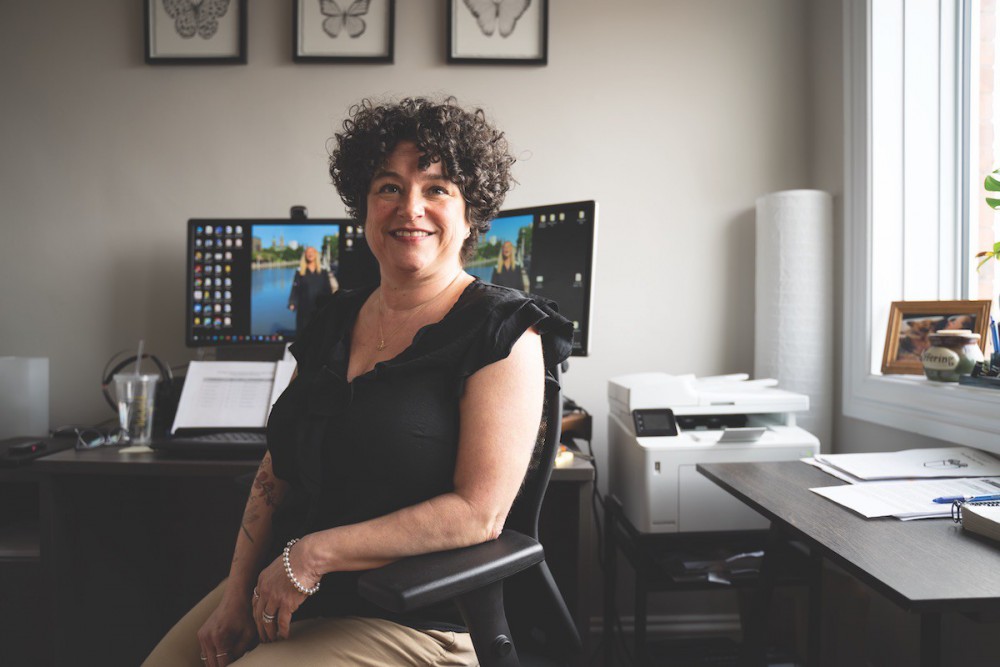
Besharah recalls with a laugh that convention organizers told her she couldn’t bring Olivia with her to the convention floor “because the delegates swear too much.” She arrived, however, to find two male unionists “unapologetically there with their kids” running around the convention hall. Unlike Besharah, these dads had not asked for permission. “My failure was in asking permission and not just taking space as men feel they can,” she says.
Besharah channelled her frustration into action. Along with other members of the CUPE Ontario Women’s Committee, she spent two years working toward the establishment of a kids’ camp that would run alongside the CUPE Ontario convention. The camp was designed as a space where kids could learn about labour history, international solidarity, and generally about what their parents – “mostly their moms,” says Besharah – were doing at the convention. The camp culminated in the kids presenting their learning to delegates.
“I would not be able to be a negotiator or do any travel related to work – be a union rep, for example,” she says, “without the child care policy.”
Besharah’s daughter Olivia, who is now a teacher and member of the Elementary Teachers’ Federation of Ontario, participated in the first youth camp in 2008, when she was 12. She led the youth camp’s presentation on the convention floor, telling delegates that “together we built our own house of labour, using union principles as our bricks and mortar.”
Besharah then spearheaded a resolution to establish a similar camp at CUPE’s national convention. It was launched in 2011, and both camps continue to run at the Ontario and the national conventions. In later years, kids have written and performed a “song for the people,” created an advertising spot against the privatization of public services, and performed a skit about how unions contribute to fighting poverty.
Transform the workplace and the community
Writing about the major wins of the 2012 Chicago Teachers Union (CTU) strike in No Shortcuts: Organizing for Power in the New Gilded Age, veteran union organizer Jane McAlevey argues that the strike’s most profound success was the powerful solidarities the Chicago teachers built with the city’s entire working class. To achieve this, she asserts, “good unions need to engage the broader community in the fight, so that the community, of which the workers are an organic part, transforms along with the workplace.”
Fighting for the dignity of the whole worker, then, does not only create more justice for members. It is also key to building union power, because if unions fight for their members’ communities, members will bring their communities to the unions’ fights, too.
Special thanks to Norma, Heather Holdsworth, Cole Rockarts, and Sophie Jean, who provided valuable and inspiring insights for this article series.


